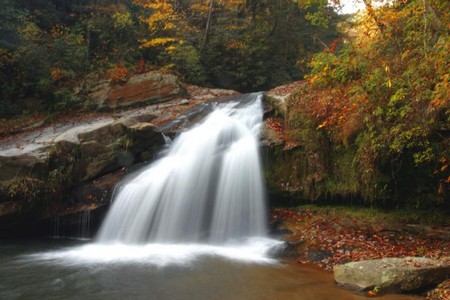Streams as well as waterfalls make really perfect subjects for photographs because of their flamboyant motion. Mostly, the scenery around these bodies is also equally marvelous. However, the motion of these bodies can often pose a problem to be photographed. The following steps will help you to capture a waterfall or a stream without blurring your photograph:
Shutter speed. The most important feature of your camera that should be in your mind while photographing any stream or waterfall is the speed of the camera shutter. This feature tells you the time period for which your shutter will remain open. If the speed of the shutter is higher, this means that the camera shutter will shut off very quickly. This allows the movement to be captured as freeze framed. High shutter speed allows you to crystallize drops of water in the photo, and gives you a photograph with details. You can even see the smooth lines that the water forms as it falls.
ISO. The printing speed of the film should also be taken into consideration. If the film has a high ISO, then you will be able to capture pictures with motion subjects better. For the photograph of a stream surface, choose a film with an ISO of 600 to capture the surface perfectly. Also choose the perfect photo paper like photo printer paper on where you’re about to print your captured streams and waterfalls photos.
Streams. Do not forget that streams will be photographed differently as compared to waterfalls. In the case of waterfalls, you may want to capture the movement of the fall. But in the case of streams, people may want to capture whatever is at the base of the stream surface. According to Beauty in the Still Photography, for a stream, you may also want to lower the speed of the shutter to slightly blur the base of the stream. This also enables you to capture the images of the fish at the base of the stream surface in a better way.
Practice. In case you have plans to camp or hike and want to get the perfect photographs of the waterfalls or streams, then start practicing beforehand, so that you have no troubles once you are on the site of action. One excellent way to practice is the artificial falls or fountains found in the city. You may take a big artificial fountain and practice on its falling water for a waterfall. The water surrounding the main fountain will more or less resemble a stream.
Seasons. Take into account the season before you take a picture. Waterfalls and streams may change in many ways, all-depending on seasons. During winters, all you will see is a fresh landscape with soft colors. But during autumn, the stream surface will be full of vibrant colors in the form of leaves that have fallen down. However, in summer you may find many different animals, all gathered around the streams, simply to cool themselves, or maybe to have a drink of the cooling water.
You may also wish any friend to pose for you in front of the stream or waterfall while you click. These scenic objects are equally suited to depict emotions and dramatic effects to the photograph of the person in question.
